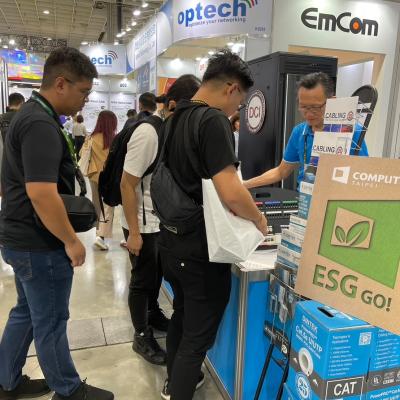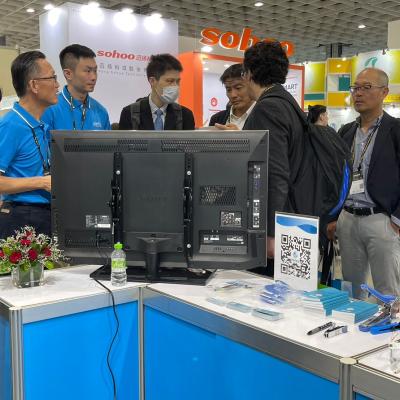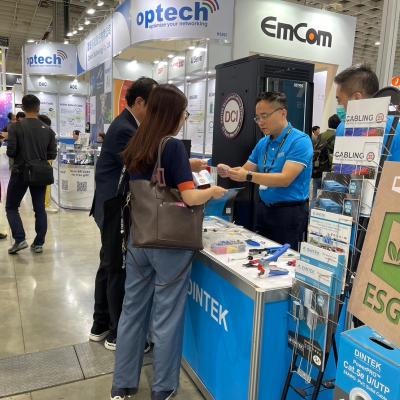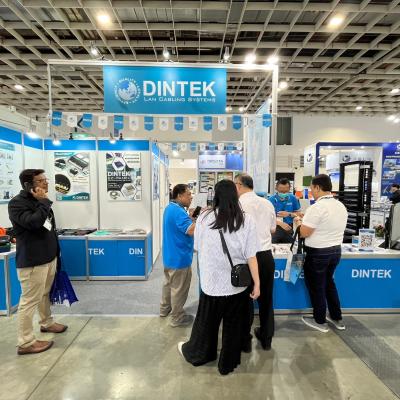Cat.8 offers both maximum speed and stability
Category 8 cabling is a new category of cabling that has been developed to support 25GBASE-T and 40GBASE-T applications developed by the IEEE. The Category 8 standard was developed by the ANSI/TIA-568 standards body, more specifically, the TR42.7 committee. The document that details Category 8 cabling is ANSI/TIA-568-C.2-1, and was published in November 2016 as a standard.
What makes Cat.8 so unique?
One of the key differences in Cat.8 cable is its shielding. Unlike Cat.5e to Cat.6A, Cat.8 cable does not come with an unshielded twisted pair, it only comes as a shielded solution. As part of the cable jacket, a shielded or shielded twisted pair (STP) cable employs a layer of conductive material to protect the internal conductors from electromagnetic interference (EMI), resulting in faster data transmission speeds and fewer errors. Cat.8 cables go one step further, wrapping each twisted pair in foil to virtually eliminate crosstalk and enable higher data transmission speeds. The result is a heavier gauge cable that is quite rigid and difficult to install in tight spaces.

Is Cat.8 more expensive?
Cat.8 Ethernet cable is ideal for switch to switch communications in Data Centers and server rooms, where 25GBase‑T and 40GBase‑T networks are common. Its RJ45 ends will connect standard network equipment like switches and routers, allowing for 25G or 40G network upgrades that do not require a complete equipment overhaul. Its shielding, as mentioned earlier, helps to minimize EMI/RFI line noise in crowded network installations. Cat.8 can be used in a home network but it's really designed for high-speed switch to switch communication in a Data Center. Plus, as the heavier gauge Cat.8 cable is quite rigid, it makes it more difficult to install and terminate. A better, more cost-effective choice for a "future-proofed" home network would be Cat.6 or Cat.6A cable.
Basic specs for Cat.8 cable
Category | Cat.8 | Connectors | RJ45 / RJ45 |
|---|---|---|---|
Booted | Yes | Shielded | Pair Foil Shielded / 4 Pair Braid Shield |
AWG | 24 AWG | Bandwidth | Up to 2GHz |
Jacket | PVC | Conductor | Stranded
|
Conductor Material | Pure Copper | Contact Gold Plating | 50 Micron
|
Backwards Compatible | Yes | Max Data Rate | 40 Gbps |
Cat.8 is still not widely available, but the demand is already strong. Data Centers are itching for a scalable copper cable that can compete with fiber optics. With the rise of data transmission due to the exponential increase in the volume of data stored, the rapid centralization of data to the cloud, and the ever-increasing bandwidth available through broadband and 5G network hardware manufacturers, IT managers, and Data Center engineers are constantly looking for quick, easy, and cheaper ways of moving more data. Outside of fiber, Cat.8 is the new "go-to" cabling solution. Basically, any operation that needs to scale fiber optics might be looking to substitute Cat.8 instead over the next few years.
DINTEK's XLR-8 Category 8 cabling infrastructure system
The XLR-8TM Category 8 cabling system has been designed to support 25GBase-T or 40GBase-T transmission. It has been tested and the testing confirmed that it meets the latest Category B ISO standard (configuration: 2m+26m+2m & 1m+5m+1m Channel) and it is also backward compatible with Category 6A, 6 and 5e systems.
The DINTEK's XLR-8TM Category 8 fully shielded solution offers superior alien crosstalk suppression, excellent insertion loss, and provides enhanced electromagnetic interference (EMI) protection.








